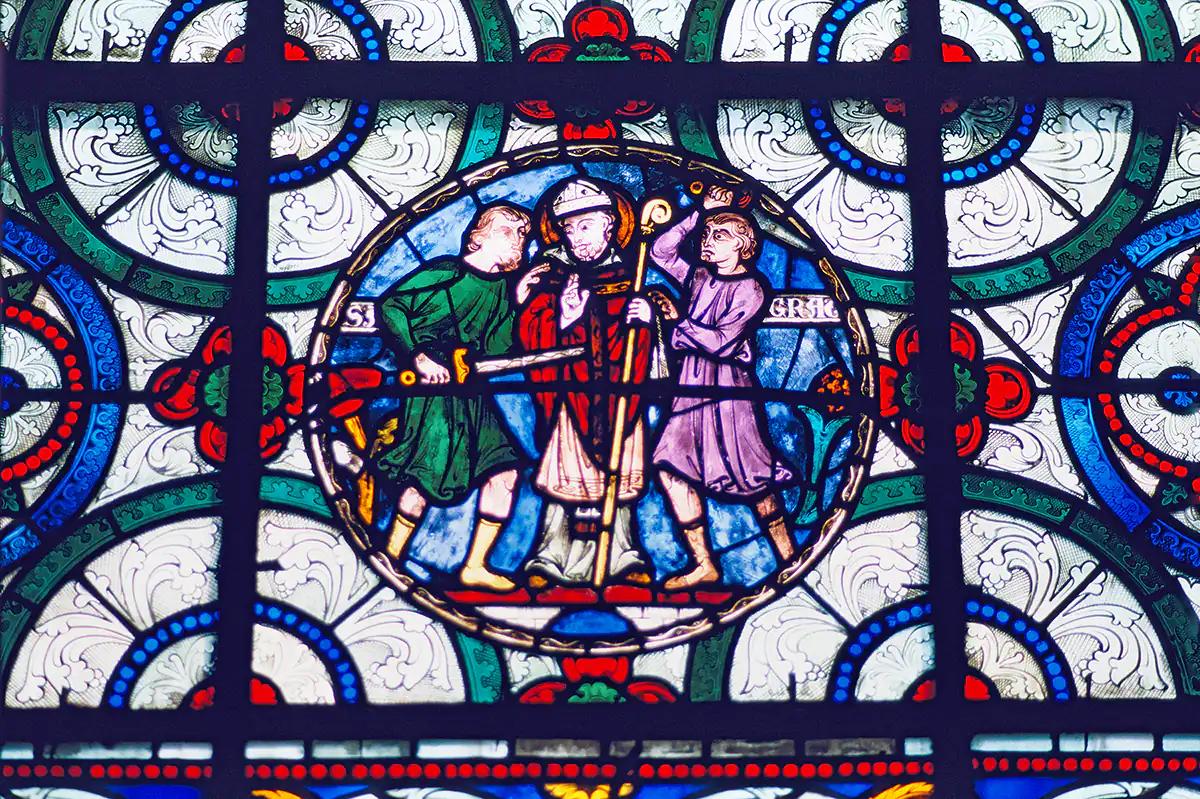Canterbury Cathedral
The most famous of England's pilgrimage shrines during the late medieval ages, Canterbury Cathedral marks a sacred site continuously used long before the Roman's arrival in 43 AD. A Celtic church was established in Canterbury during the Roman occupation, but following the departure of the Roman legions in the 5th century and the reconquest of the region by Jutes and Saxons, Christianity was displaced by the old pagan religions. Sent by Pope Gregory to eradicate this paganism, St. Augustine came to Canterbury in 597 AD and established the cathedral that has remained England's primary ecclesiastical administrative center. A succession of cathedrals has stood upon the site of the original Augustine construction. Destroyed by fires and Danish raiders, these cathedrals enshrined an impressive collection of relics, which stimulated Christian pilgrimages from the 7th century onwards.
However, Canterbury's importance as a major European pilgrimage destination began after Thomas Becket's martyrdom on December 29, 1170. Becket, the archbishop of Canterbury and the most influential religious figure in England, had angered Henry II, the King of England. In response to the king's question, "Who will rid me of this turbulent priest?" four knights entered Canterbury Cathedral and slew Becket with swords. While Becket was undoubtedly no saint (he is known to have been an arrogant, greedy, and manipulative opportunist), his martyrdom gave rise to England's most significant pilgrimage tradition. The reasons for this may be found in the unjust circumstance of his murder, the coincidental occurrence of some miracles of healing immediately following the murder, the penance done at the shrine by Henry II four years later, and the widespread medieval belief in the spiritual powers emanating from the relics of saints and martyrs.
For more than three hundred years, Canterbury attracted an enormous number of pilgrims from throughout England and Europe, and hundreds of healing miracles were recorded at the shrine of Thomas Becket. Catering to the needs of these pilgrims became the principal industry of the town, and a colorful picture of the pilgrimage era is given in The Canterbury Tales by Geoffrey Chaucer (written 1394-1400). Pilgrimages to Canterbury and most other English shrines waned in the mid-16th century after Henry VIII dissolved the monasteries and confiscated their properties. A measure of the immense popularity of the Canterbury pilgrimage is evident from the fact that twenty-six wagons were required to haul away the confiscated gold, jewels, and other treasures that had been donated to the shrine. It is said that a forest of crutches left by cripples who had been miraculously healed also surrounded the shrine.
For additional information:

Martin Gray is a cultural anthropologist, writer and photographer specializing in the study of pilgrimage traditions and sacred sites around the world. During a 40 year period he has visited more than 2000 pilgrimage places in 160 countries. The World Pilgrimage Guide at sacredsites.com is the most comprehensive source of information on this subject.

